
Naturally Decorated Boiled Eggs for Easter (4-Ingredients Only!)

These Naturally Decorated Boiled Eggs are a charming and natural way to celebrate Easter. Made using onion skins, parsley leaves, and old stockings, this traditional Eastern European technique gives the eggs a beautiful, earthy marbled pattern—no artificial dyes needed! Perfect for Easter brunch, springtime crafts, or a fun kitchen project with kids.
What Are Decorated Boiled Eggs?
Decorated boiled eggs—sometimes called “onion skin Easter eggs”—are a traditional way to naturally dye eggs using ingredients like red or yellow onion peels. This method dates back generations in Eastern Europe and is especially popular in countries like Ukraine, Hungary, and the Balkans. The addition of parsley or clover leaves adds delicate botanical prints, creating one-of-a-kind results. These eggs aren’t just for show—you can eat them, too!
Why Everyone Will Love This Recipe
- Natural and dye-free: Uses only onion skins and herbs.
- Fun for kids: A creative way to decorate eggs without messy paints.
- Budget-friendly: Uses ingredients and materials you likely already have.
- Stunning results: Each egg is unique and makes a great table centerpiece.
Pro Tips for the Best Decorated Boiled Eggs
- Use brown eggs: They take on richer hues than white eggs.
- Soak overnight: Letting the onion peel water sit overnight intensifies the color.
- Secure leaves tightly: This ensures clean, defined prints on the shells.
- Brush with oil: A little oil gives your eggs a lovely, polished shine.
- Try different leaves: Clover, dill, or coriander make beautiful patterns.
Frequently Asked Questions
Can I Use White Onions Instead of Red Ones?
Yes, but red onion peels create deeper colors. White onion skins result in lighter, amber tones.
Do I Need to Boil the Onion Skins Overnight?
You don’t have to, but letting the dye water steep overnight produces more vibrant colors.
What Kind of Stockings Should I Use?
Use old nylon stockings or pantyhose—clean, of course! They should be sheer and stretchable to wrap tightly around the eggs.
Can I Eat These Eggs Afterward?
Absolutely! Just make sure you keep them refrigerated and consume them within a few days.
Can I Use Fresh Herbs Instead of Parsley?
Yes! Dill, cilantro, and small basil leaves all work well for making prints.
How to Store
Let the decorated eggs cool completely, then store them in the refrigerator in a covered container. They’ll stay fresh for up to 1 week.
For the best taste and appearance, serve them within 3–4 days. You can reheat them by placing the eggs in warm water for a few minutes, but they’re also great served cold.
How to Freeze
Boiled eggs do not freeze well. Freezing causes the egg whites to become rubbery and the yolks crumbly. It’s best to make these eggs fresh and eat them within the week—no freezing recommended for this recipe.
Ingredients
How to Make Naturally Decorated Boiled Eggs
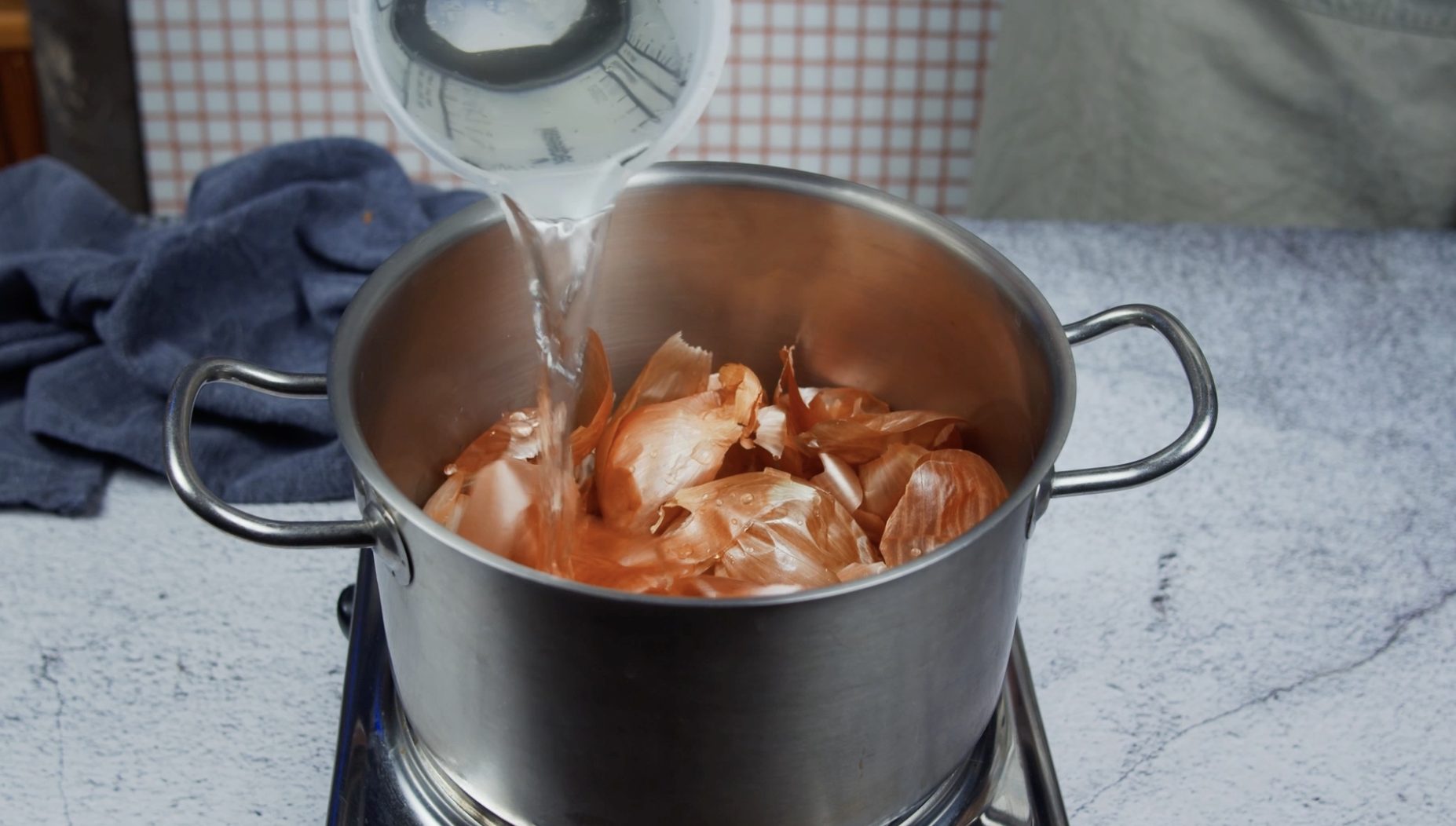;Resize,width=712;)
Peel the onions and transfer the skins into a large pot. Add 2 liters of water. Bring to a boil, reduce heat, and simmer for 20 minutes. Remove from heat and let it sit overnight for deeper color.
Peel the onions and transfer the skins into a large pot. Add 2 liters of water. Bring to a boil, reduce heat, and simmer for 20 minutes. Remove from heat and let it sit overnight for deeper color.
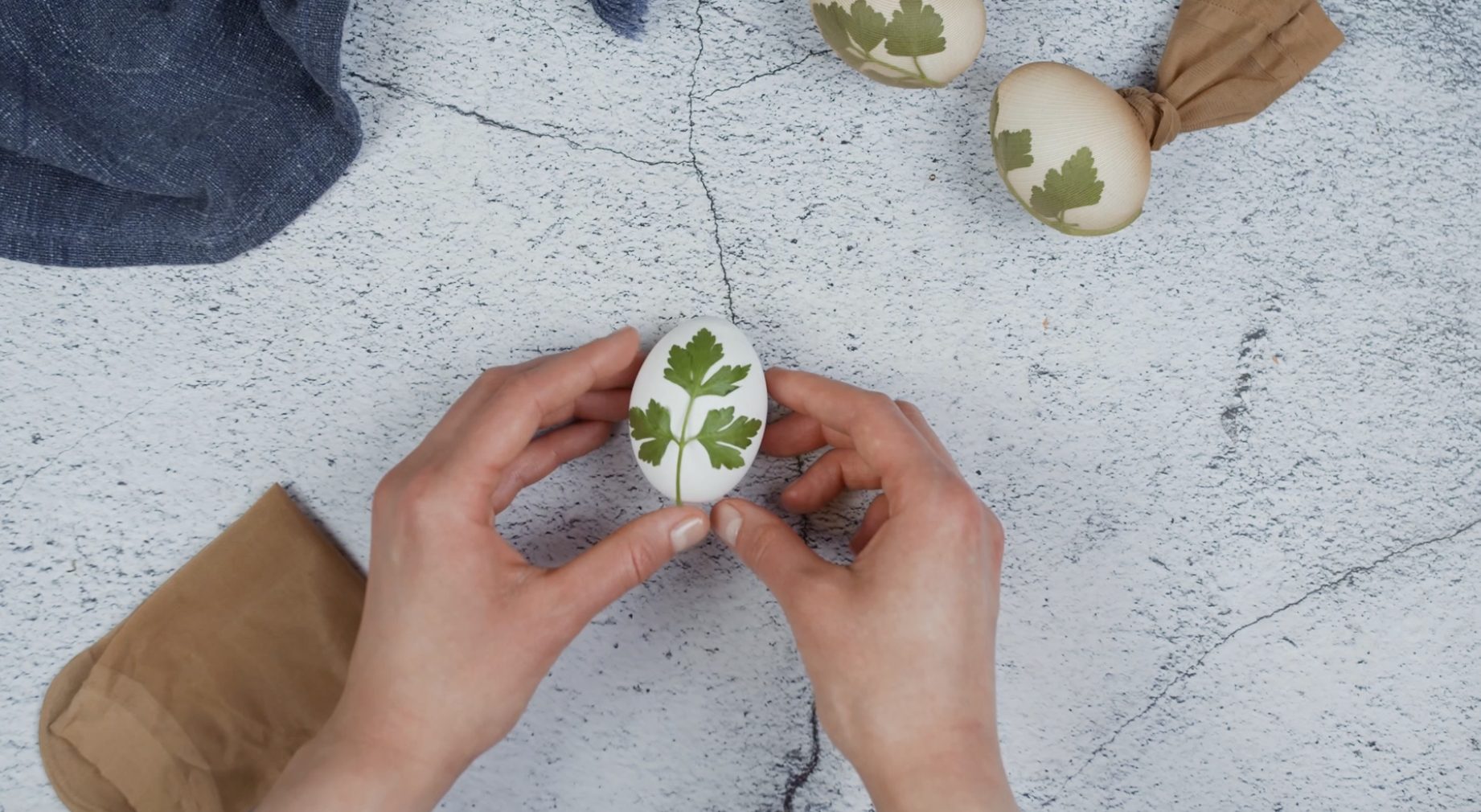;Resize,width=712;)
Lightly spray the raw eggs with water. Press parsley leaves onto each egg—these will leave a botanical print.
Lightly spray the raw eggs with water. Press parsley leaves onto each egg—these will leave a botanical print.
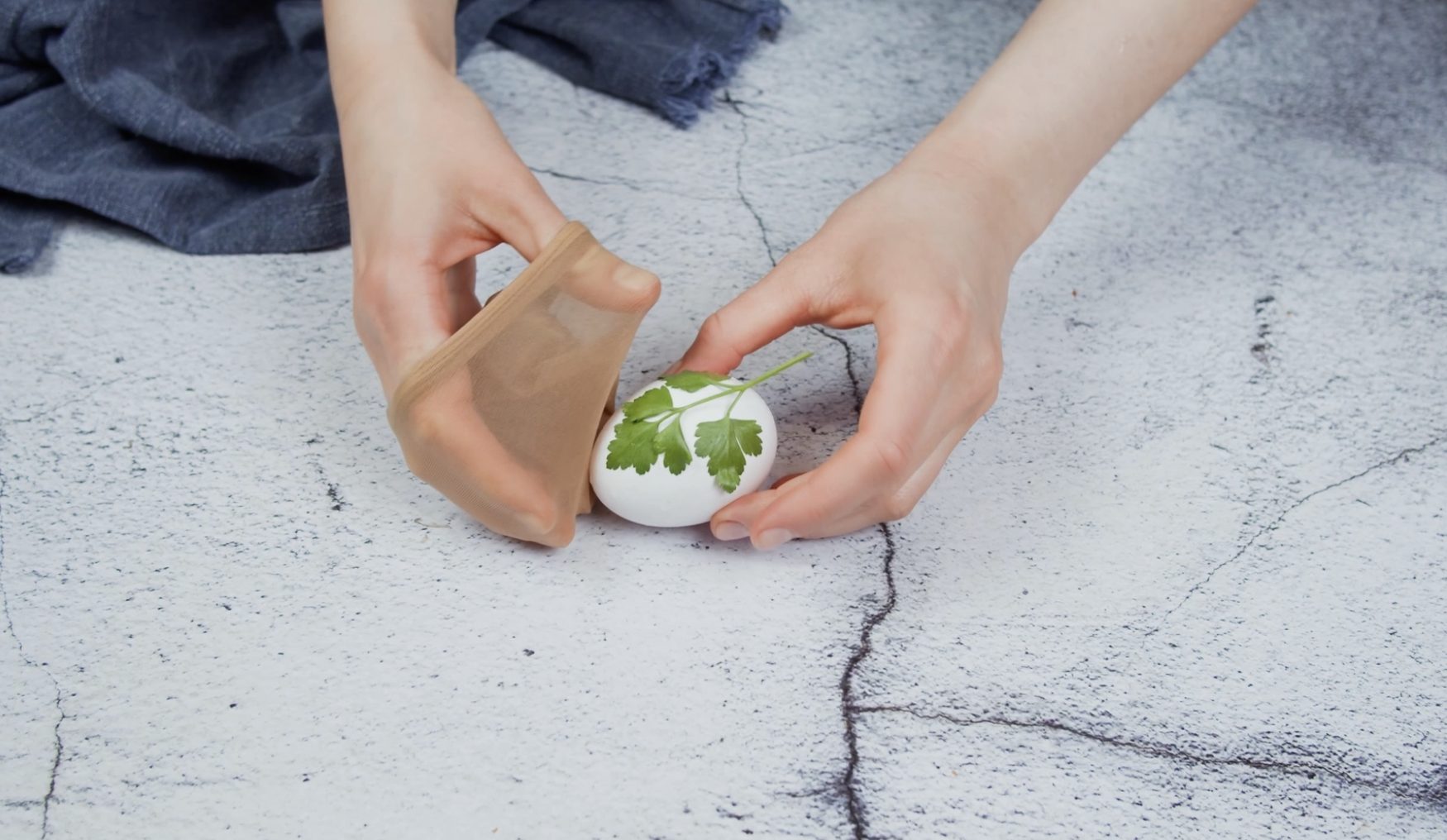;Resize,width=712;)
Place each egg (with leaves in place) into a square of nylon stocking. Pull tightly so the leaf is pressed flat against the shell, and tie off with kitchen twine or a rubber band.
Place each egg (with leaves in place) into a square of nylon stocking. Pull tightly so the leaf is pressed flat against the shell, and tie off with kitchen twine or a rubber band.
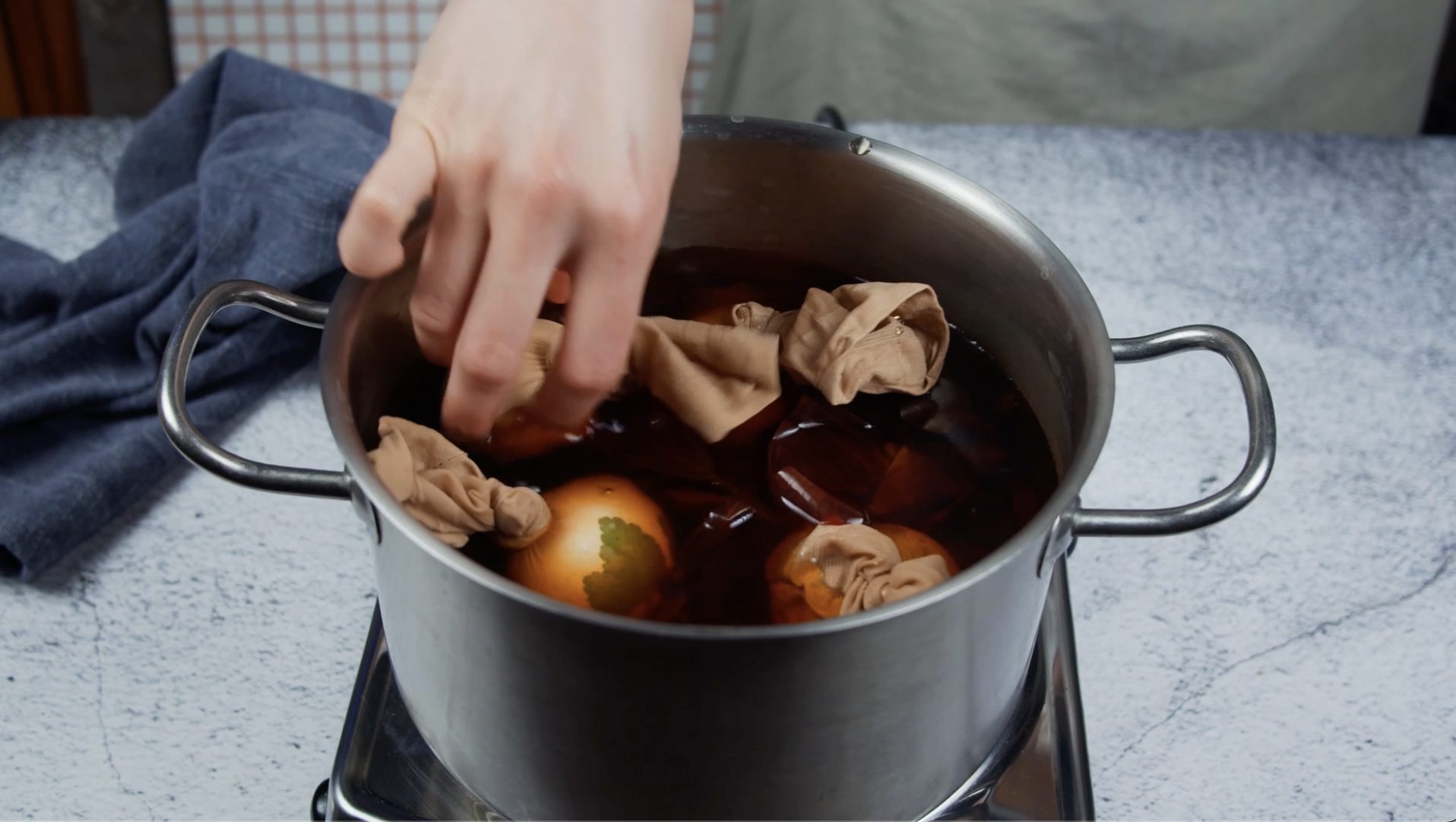;Resize,width=712;)
Bring the onion dye water back to a boil. Carefully lower the wrapped eggs in and boil for 10 minutes. Remove from heat and let the eggs cool in the dye bath for stronger color—at least 1 hour or until room temperature.
Bring the onion dye water back to a boil. Carefully lower the wrapped eggs in and boil for 10 minutes. Remove from heat and let the eggs cool in the dye bath for stronger color—at least 1 hour or until room temperature.
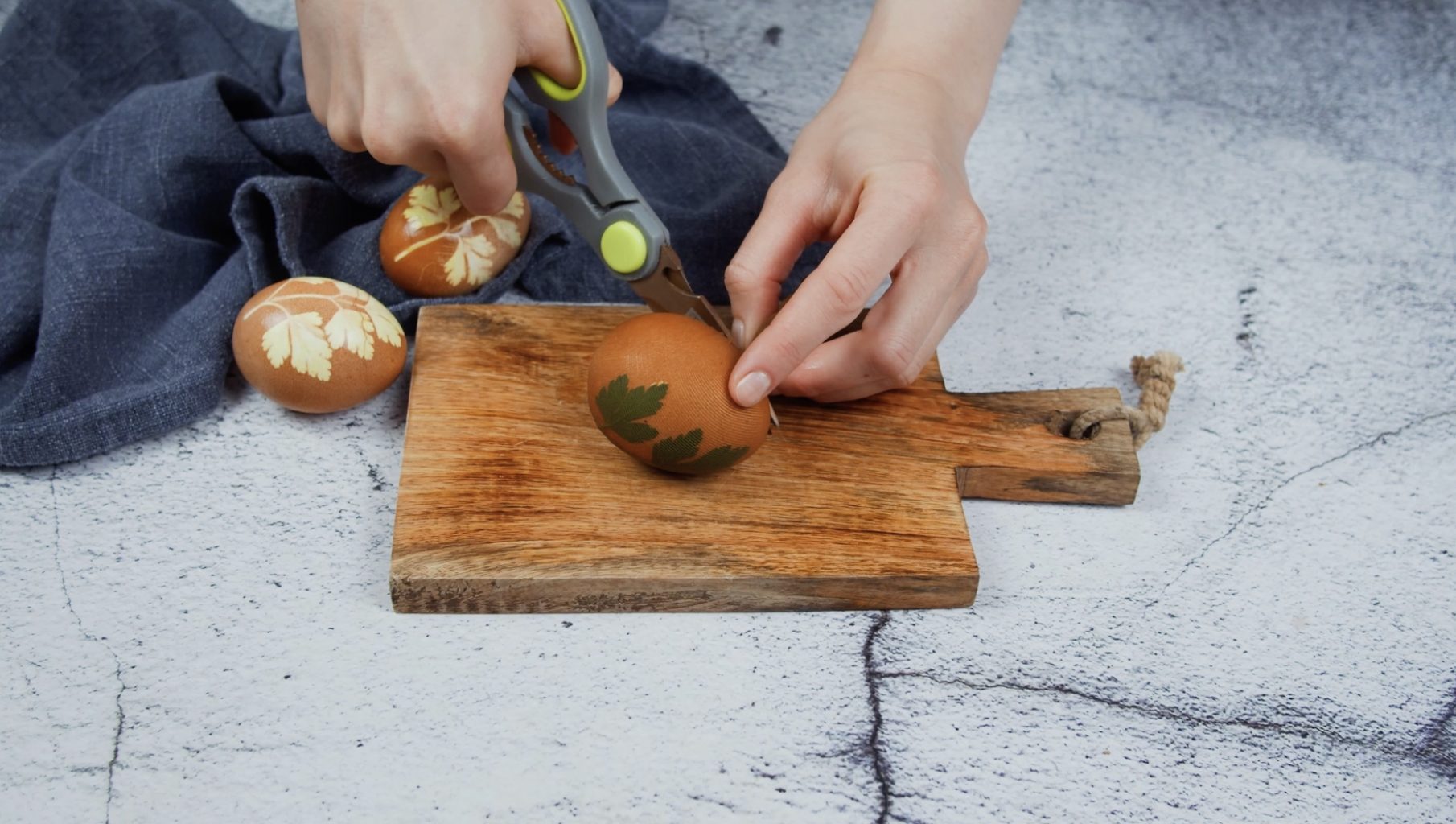;Resize,width=712;)
Gently cut away the stockings, remove the leaves, and rinse off any residue. Pat dry.
Gently cut away the stockings, remove the leaves, and rinse off any residue. Pat dry.
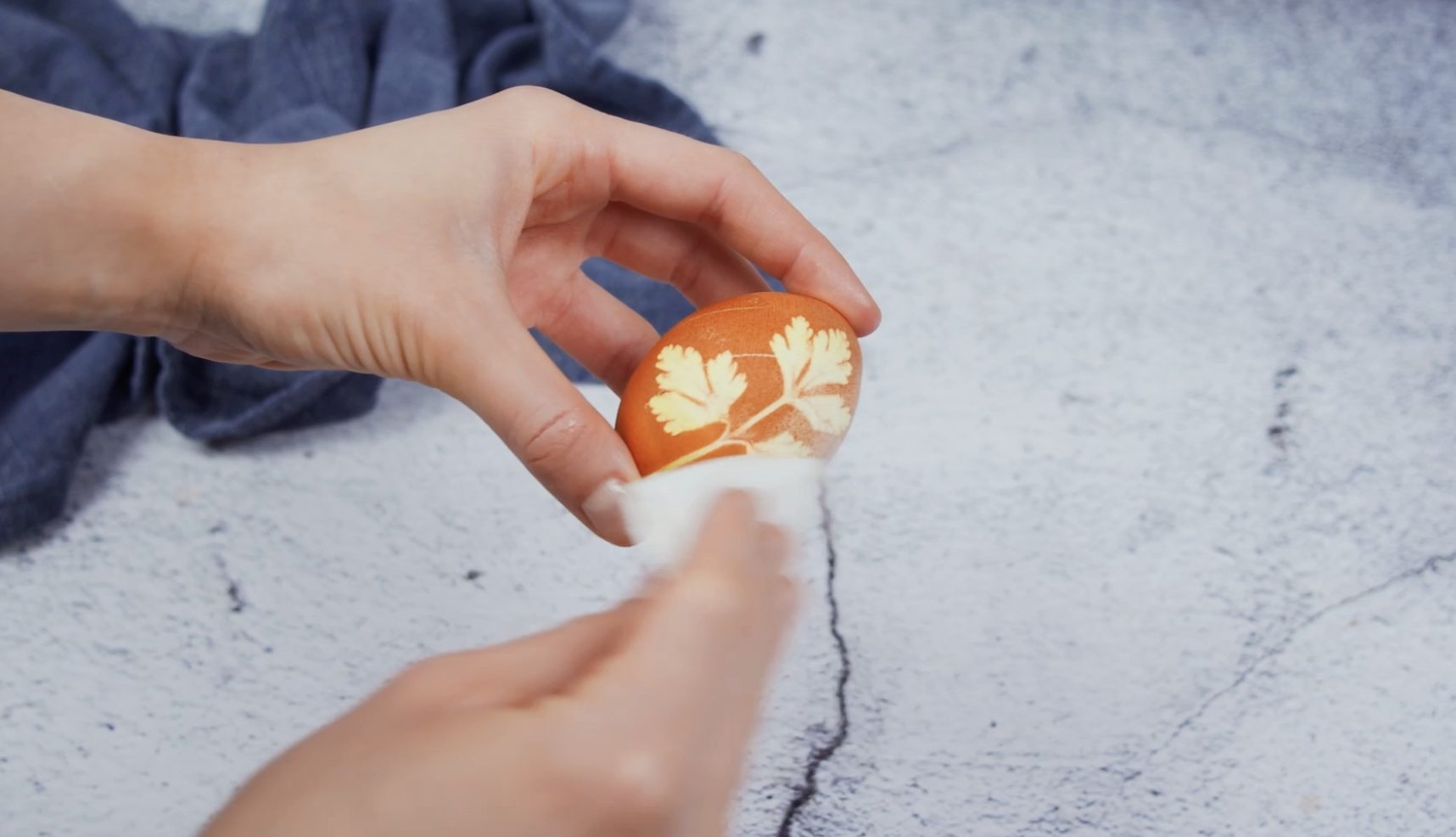;Resize,width=712;)
For extra polish, rub each egg with a drop of oil using a paper towel.
For extra polish, rub each egg with a drop of oil using a paper towel.
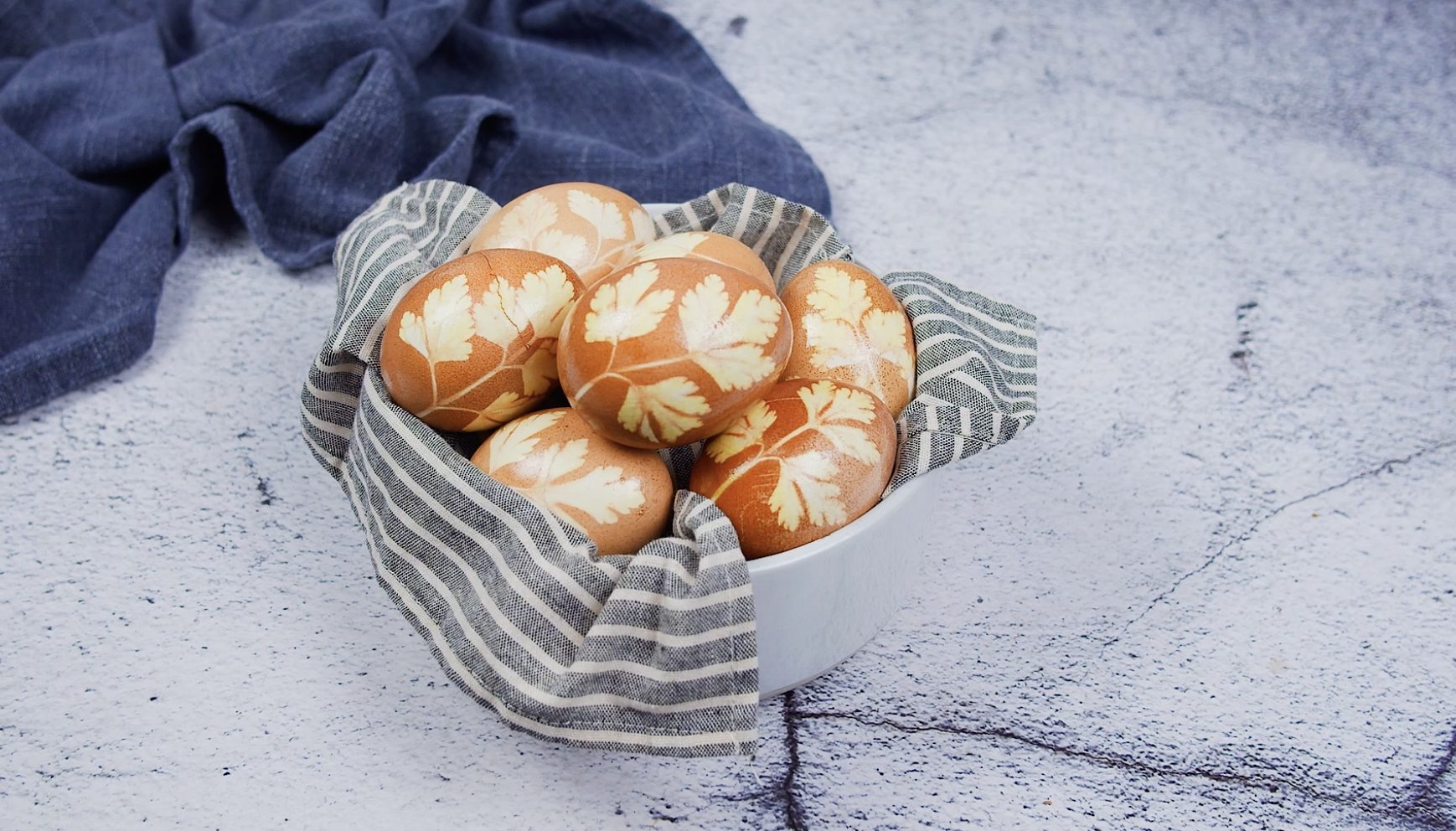;Resize,width=712;)
These eggs make gorgeous table decorations—or a tasty snack!
These eggs make gorgeous table decorations—or a tasty snack!
;Resize,width=767;)



